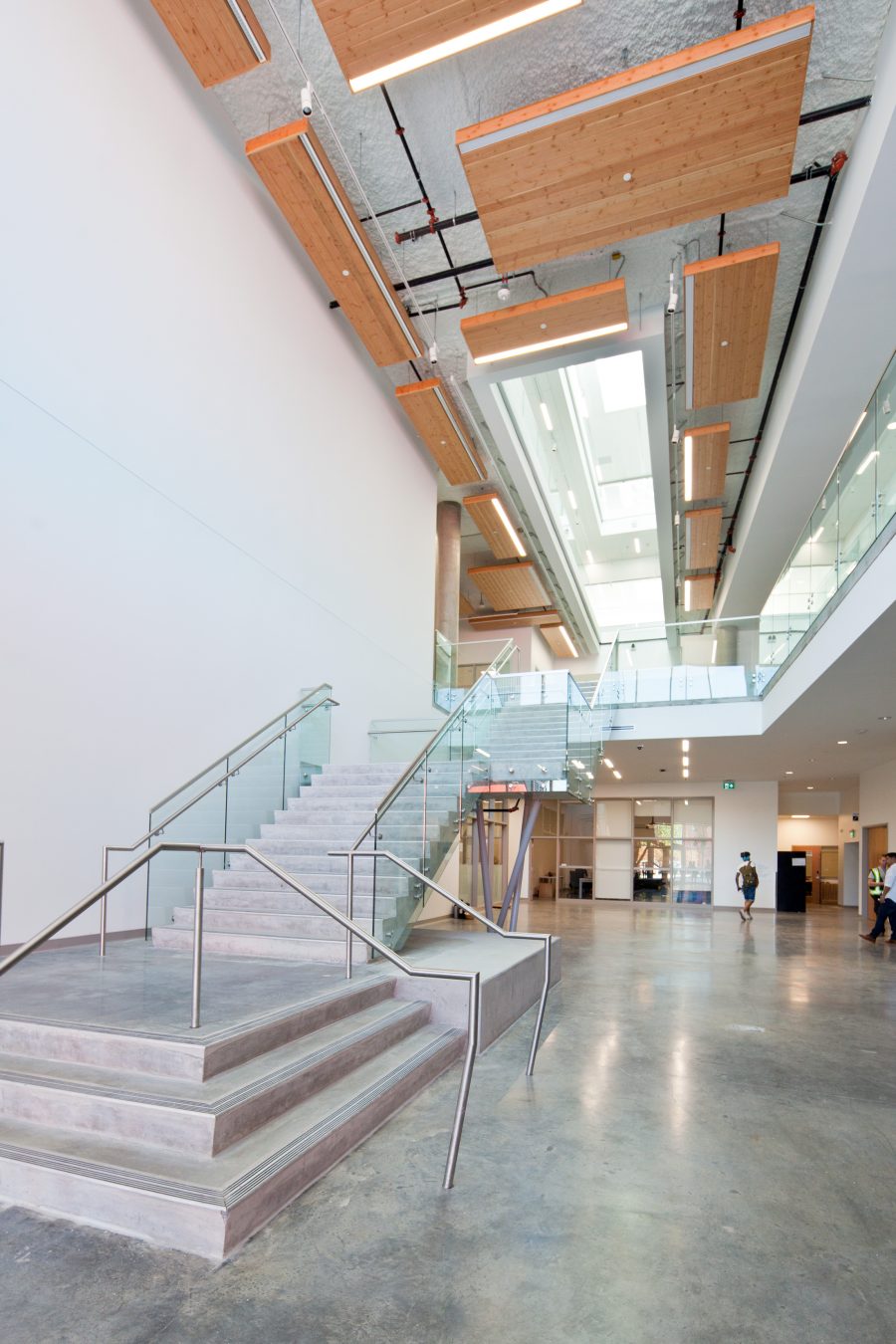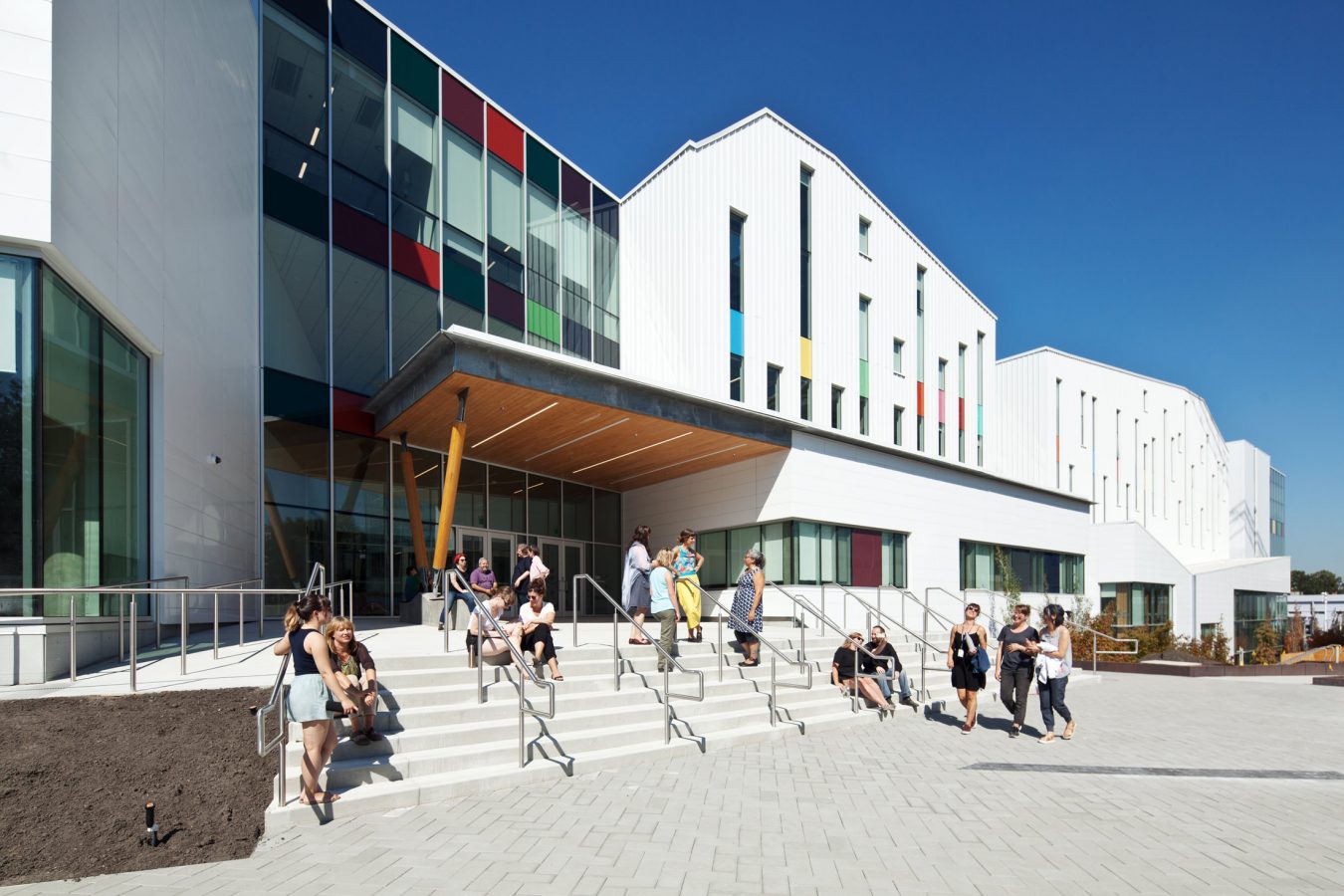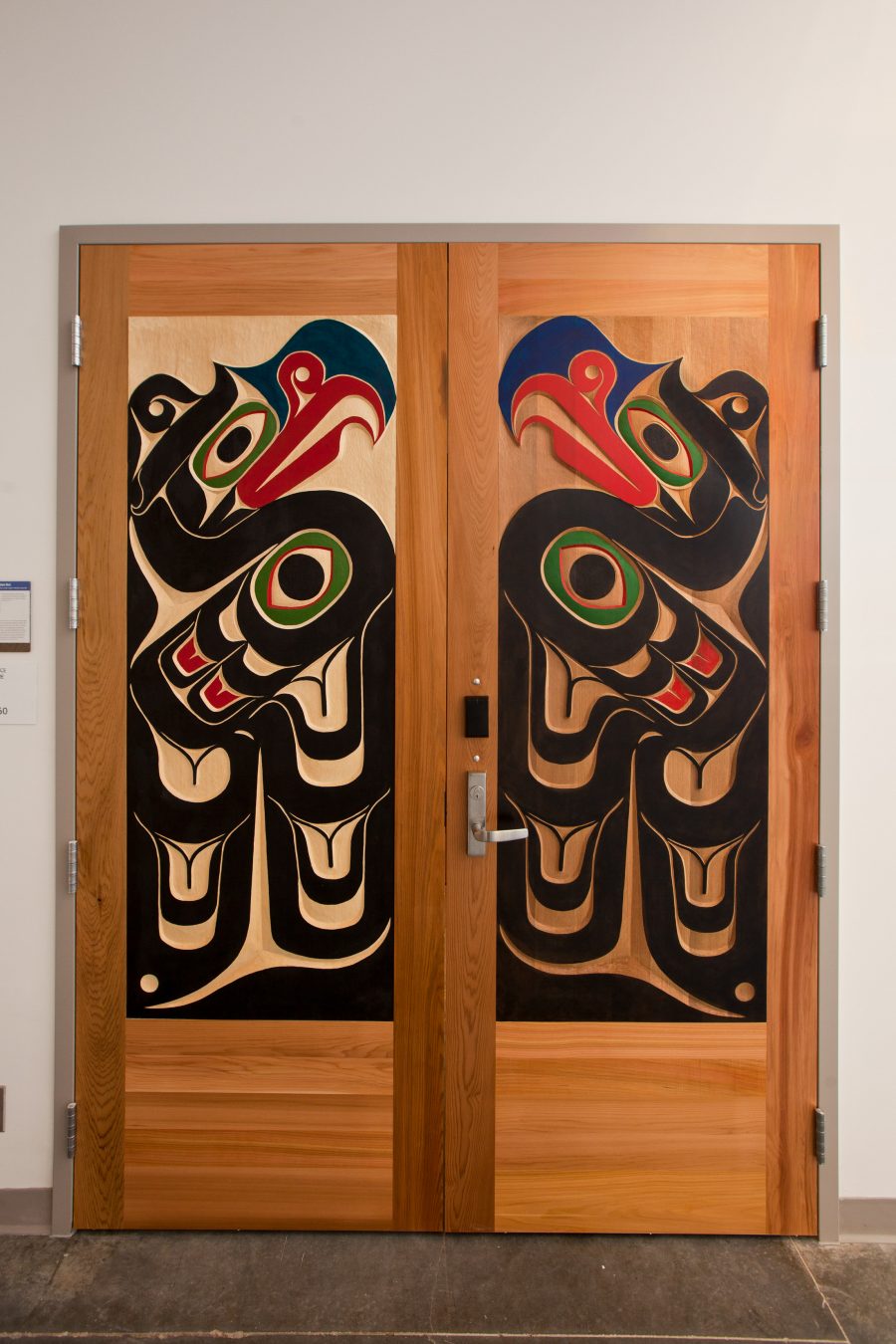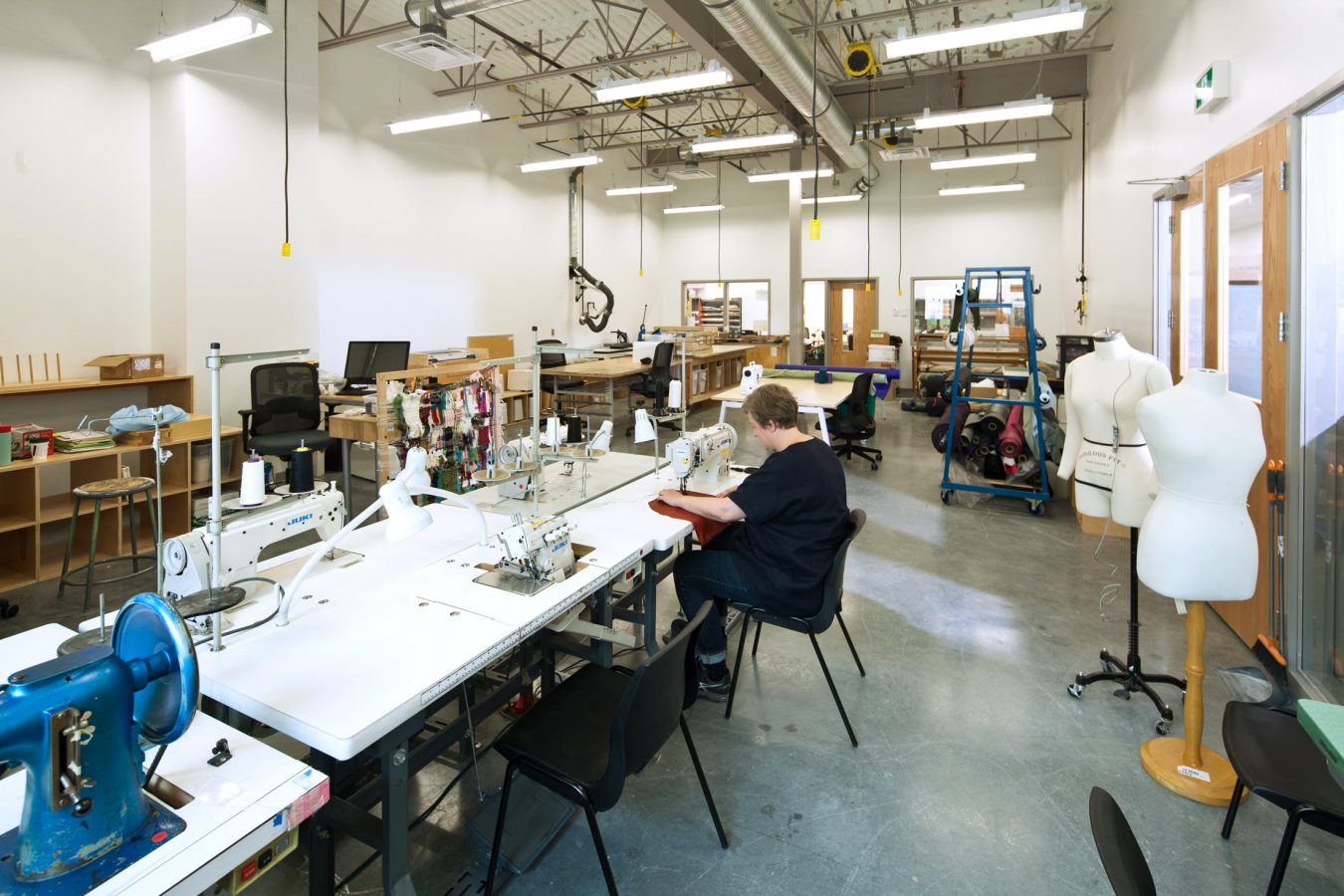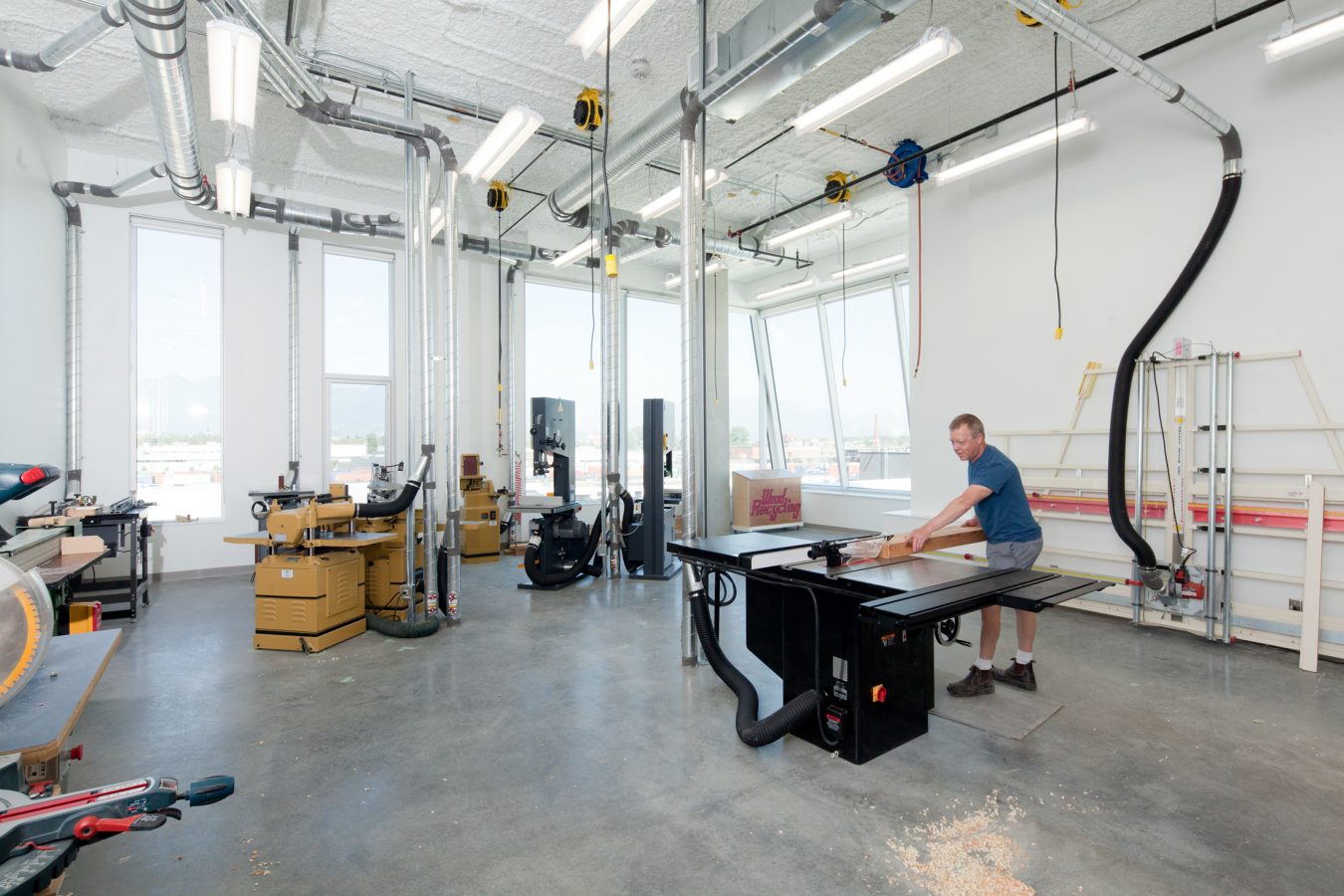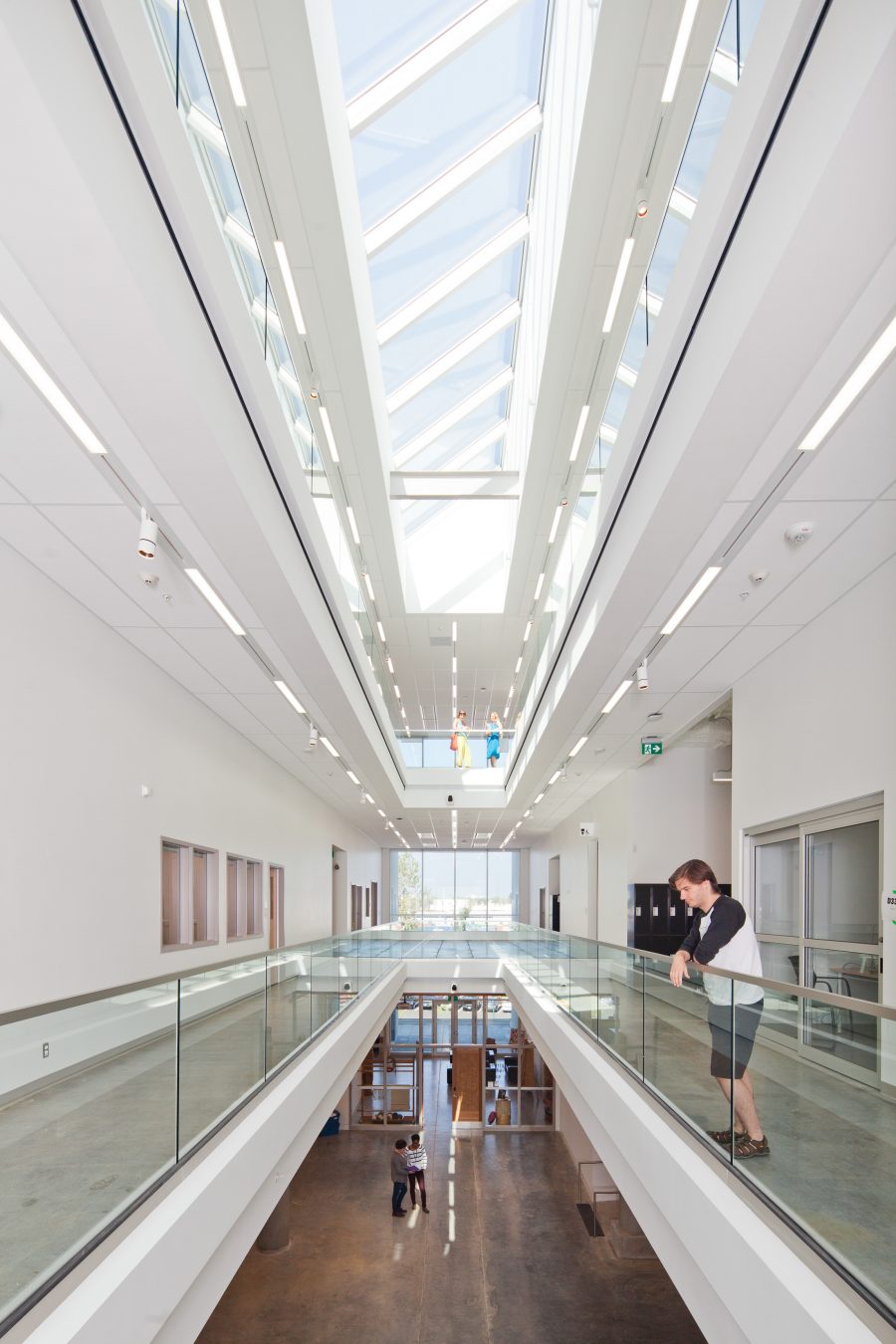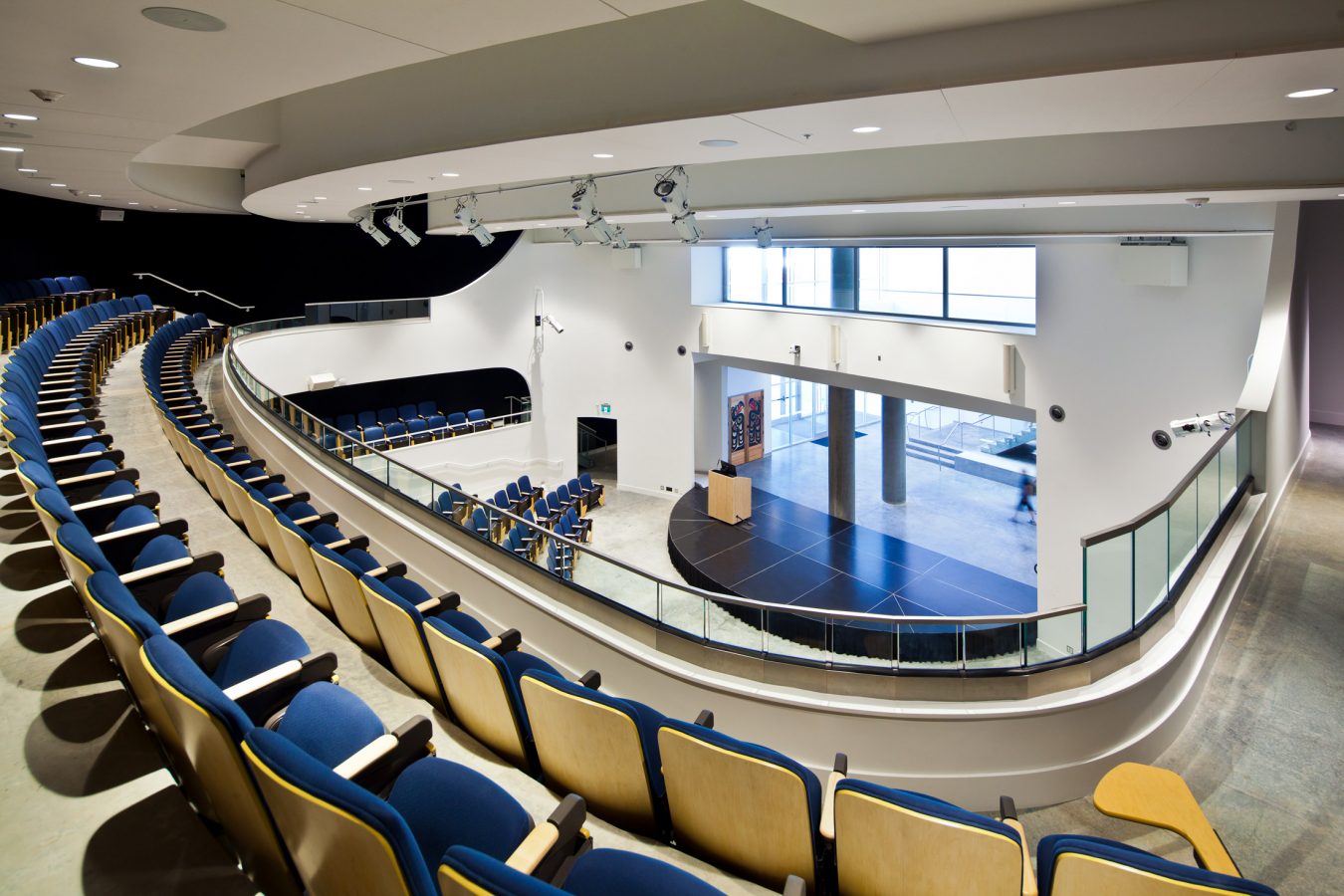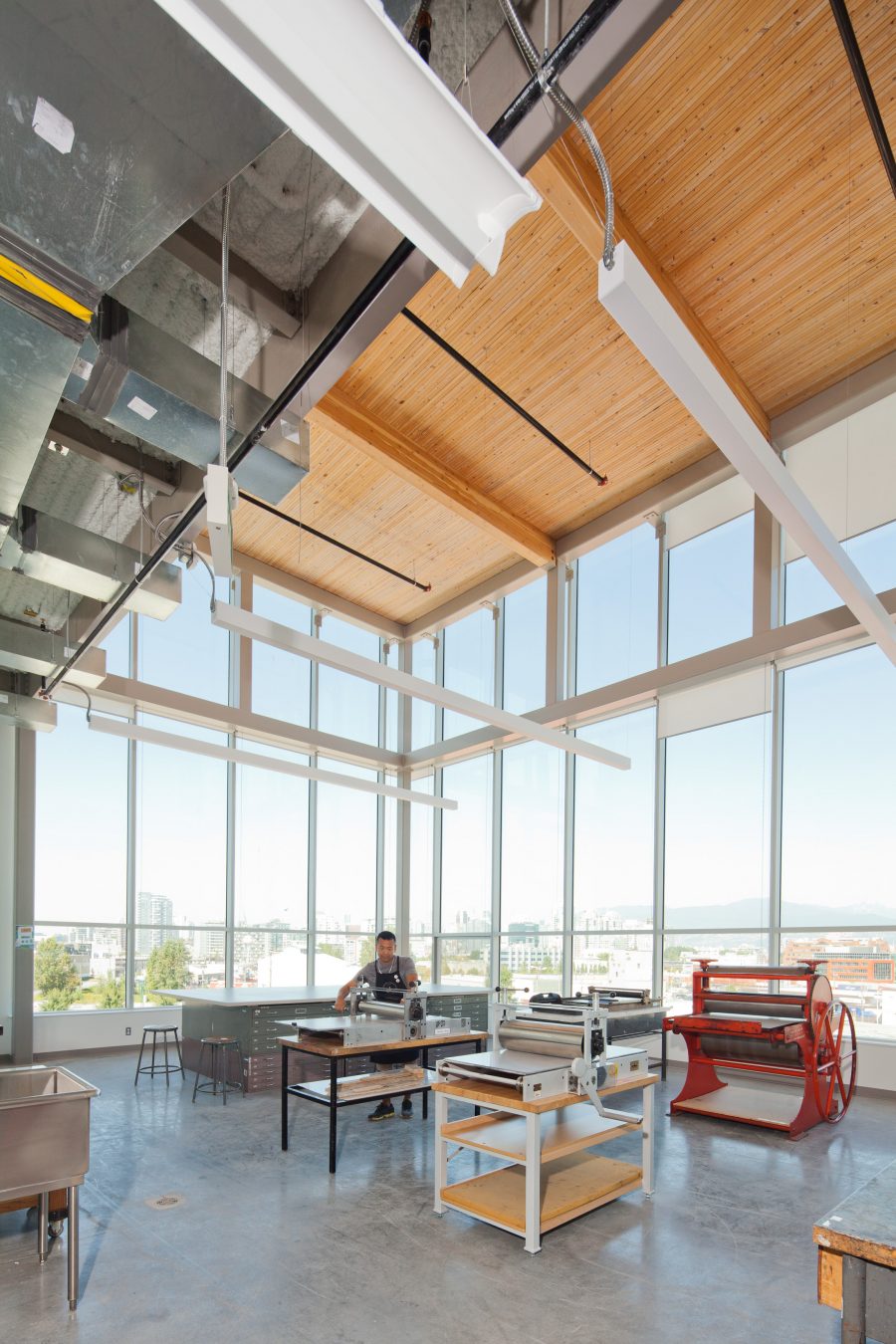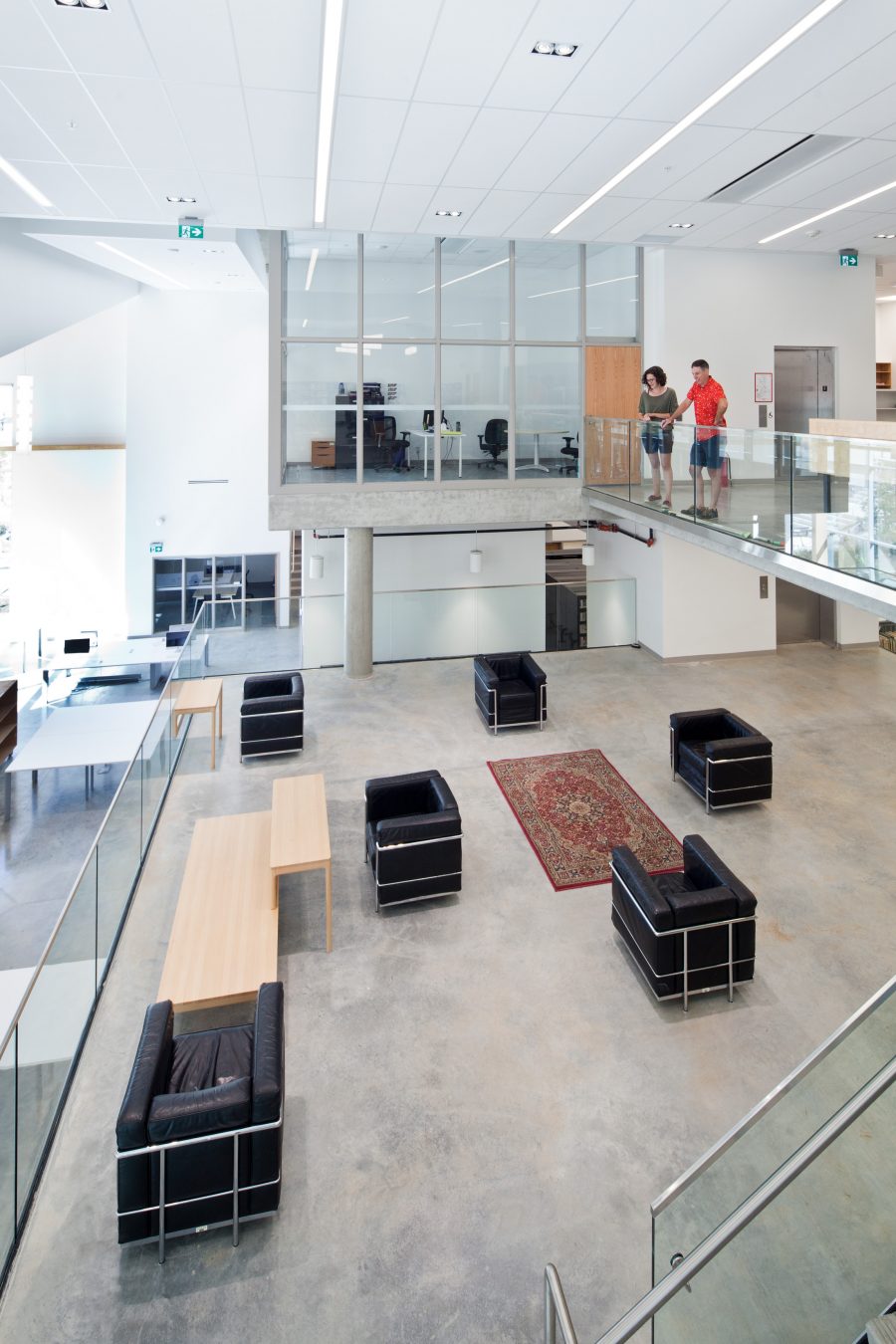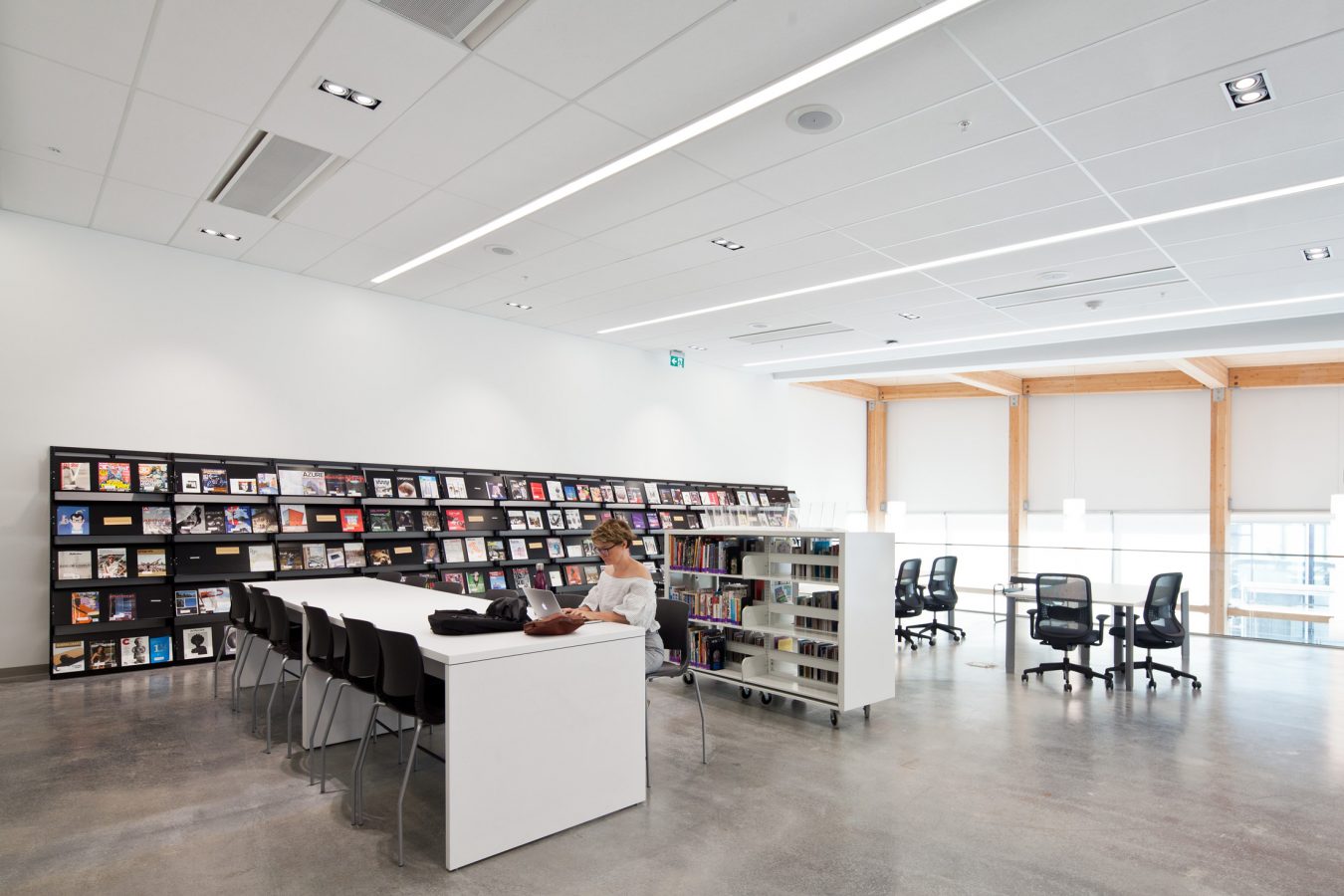“Wow, look at this view!” Gazing upon mountains, roads, and Ken Lum’s iconic Monument for East Vancouver, a group of second-year students is admiring the sights from Emily Carr University of Art + Design’s new $122.6-million home on Great Northern Way. Relocating from Granville Island, the university has settled down in a space it can finally call its own, and on Sept. 5, 2017, it proudly let 1,800 students walk through the door.
“They’re so quiet!” Roxanne Toronto, the school’s content and community specialist, says as she observes groups of students receiving the grand tour of their new academic home, which was established in 1925 as the Vancouver School of Decorative and Applied Art. “Everyone has been gobsmacked.” There’s no denying that the facility, designed by Canadian firm Diamond Schmitt Architects, is state of the art. At its core, the new campus—nearly 290,000 square-feet and stretching almost two blocks—boasts a multitude of student spaces: common areas, purpose-built studios, and moveable walls that are waiting to be filled with artworks fashioned by the student body.
“The Granville Island campus had its merits, but this campus is purpose-built and there is much more space. Everything is laid out in a very logical fashion,” Toronto says as she strolls the halls of level four, a vast space that houses printmaking, photography, and drawing studios. “In the old building, sometimes we’d have a studio here and a studio across the street. Now, everything is just here.”
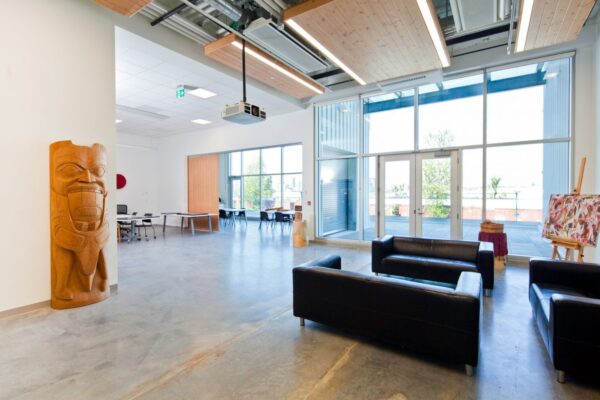
Walking through the university’s second level, it is easy to notice that this building encourages what Toronto calls “cross contamination.” The Student Union looks out upon an area of tables and chairs where students can find time to relax, be with friends, and maybe even order up a frothy flat white or a Midnight in Havana sandwich from the oh-so-cozy Loafe cafe. Across the hall is the Ron Burnett Library and Learning Commons, a world-class space for students to study from the school’s collection of artist-donated books, which is on display for the very first time.
“There was obviously a collaborative aspect at the other campus, but it’s visible here,” Toronto says. “There is so much light, glass, and transparency. They’ve never really had this kind of space before. Students are at the centre of the design and they feel like they had an input.” One of the standout features is the Aboriginal Gathering Space—an area that Emily Carr herself, a woman who had the utmost respect for the Indigenous arts, would have been proud of. There is also a designated outdoor arts plaza. “It’s a part of a city cultural project,” Emily Carr communications manager Sue Lavitt explains. “It really makes that space a public space. It’s a space to engage anyone. Anyone can come and interact and see what’s happening.” Cate Rimmer, the school’s gallery and exhibitions curator, reveals that the first the inaugural program will feature the work of alumni Barry Doupé and Krista Belle Stewart, along with internationally-known Indigenous artist Dana Claxton.
As the second-year students finish their tours, Toronto and Lavitt agree that they are ready to get this new school year underway. They’re ready to have an impact on their new surrounding community and create a legacy on a land that was once a blank space. “Our role here is similar to what it was on Granville Island, and that’s shaping the city,” Lavitt says. “We’re bridging the east and the west. We’ve moved into a home that makes the most sense for us, and for our community.”

